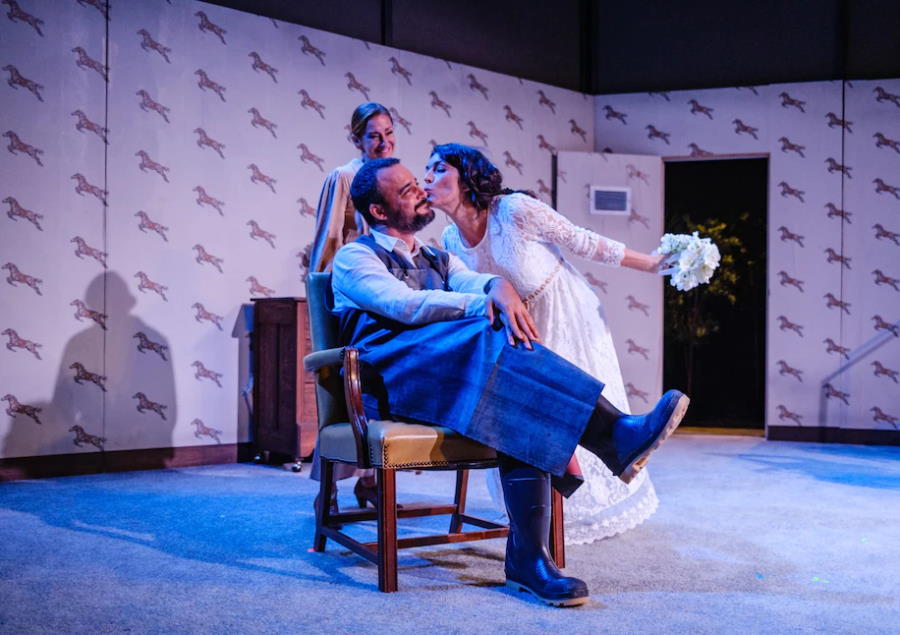This is part of a season preview package.
Set designer Silvia de Marta’s 2020 took an all too familiar turn. “I had like five productions going on in different stages of production,” she recalled in a recent interview. “And then one day they said, we’re stopping everything.”
De Marta was calling from Washington, D.C., between rehearsals for GALA Hispanic Theatre’s production of Federico García Lorca’s Doña Rosita la Soltera (now running through Oct. 3). It’s another in a long line of collaborative efforts with the director José Luis Arellano, her creative partner for about 10 years, and for both of them it is the first semblance of theatrical normalcy after an 18-month production pause.
Based primarily in her home country of Spain, de Marta designs sets and costumes on both sides of the Atlantic, garnering her Helen Hayes Awards in D.C. and Gaudí Awards in her native land. Her career began in Germany, where she started out as a set design assistant for opera, theatre, and experimental productions. In fact, her work at GALA is a rare stateside exception to her primarily European résumé.
When she received the “shocking, catastrophic” call to cease all production while at home in Madrid, the tasks shifted from staging to salvaging. “We tried to figure out how to keep on working, because we could not stop,” she explained. “The productions that were in a high level of production, we couldn’t do anything for, because we just had to rehearse and have the premiere. But the others that were in the beginning stages, we tried to keep on working with.”

While some theatre workers switched to filmed or digital productions during the pandemic, that posed a unique challenge for de Marta, as there is a vast difference between working in three- and two-dimensional space. “As a set designer, I work with space and objects,” de Marta explained. “These places have to be like a home for characters of a play, so I can’t take it digital. I know there have been some digital experiences—I have colleagues in Germany, for example, who have done some set designs for digital, through Zoom or things like this. But in this case you have to work very closely with the audio-visual designer, because, of course, everything is 2D—it’s all flat.”
This constraint meant focusing on plays that still in nascent form, giving de Marta a unique chance to get her hands on work at its very beginning stages. “For me it was very interesting, because I had the chance to get into dramaturgy at a very first moment of play,” she said. “I could imagine my own characters, or parts of the story. It was really nice to change roles for a bit.”
Getting in on the conceptual level was one pandemic upside for de Marta, whose job rarely allows for creative say in the earlier parts of the generative process. “With some other groups, I have the chance to say something in the rehearsals, to have a dialogue with the director or with a dramaturg,” she said. “But this time was really the first time I got to sit, get the pen, and really write the thing.”
After Doña Rosita at GALA, de Marta will close out the year with a new production of Ricardo Llorca’s opera Las Horas Vacias in Madrid, another collaborative effort with Arellano. Perhaps her return to opera and home marks a parallel return to normality: We can only wait and watch.
Veronica Maldonado (she/her) is an editorial contributor to American Theatre.
Creative credits for production photo: Doña Rosita la soltera (Doña Rosita the Spinster) by Federico García Lorca, adapted by Nando López, directed by José Luis Arellano, costume and set design by Silvia de Marta, lighting and sound design by Jesús Díaz Cortés.


